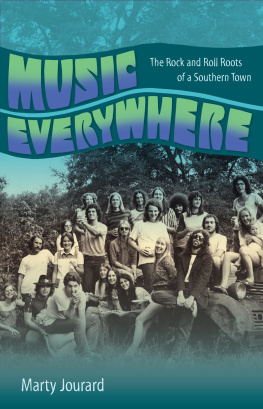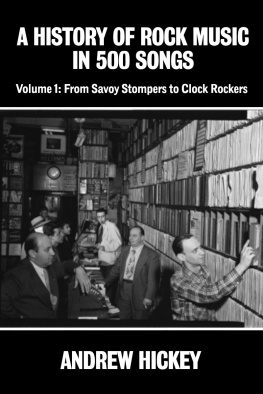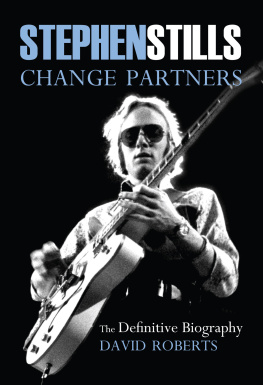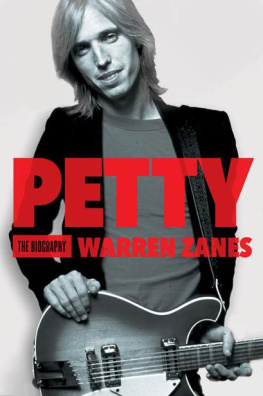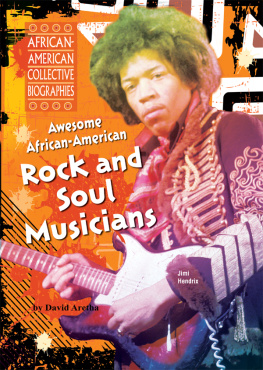
MUSIC EVERYWHERE

UNIVERSITY PRESS OF FLORIDA
Florida A&M University, Tallahassee
Florida Atlantic University, Boca Raton
Florida Gulf Coast University, Ft. Myers
Florida International University, Miami
Florida State University, Tallahassee
New College of Florida, Sarasota
University of Central Florida, Orlando
University of Florida, Gainesville
University of North Florida, Jacksonville
University of South Florida, Tampa
University of West Florida, Pensacola

Johnny Tillotson is the earliest example of a successful rock and roll performer with deep musical ties to Gainesville. Tillotson was born in Jacksonville in 1939, moved to Palatka in 1948, and enrolled at the University of Florida in 1957. A local disc jockey named Bob Norris sent a tape of Tillotsons singing to the Pet Milk Contest; as a finalist, Tillotson performed at the Grand Ole Opry in Nashville, which led to a record contract with Cadence Records. After graduating, Tillotson moved to New York City, where his career as a performer and songwriter took off. He wrote It Keeps Right on a Hurtin and Talk Back Trembling Lips, and his recording of Poetry in Motion in 1960 reached number two on the chart, with three more of his recordings reaching the Top Ten (www.johnnytillotson.com). Permission of the University of Florida, Smathers Library Special and Area Studies Collections, University Archives.
MUSIC EVERYWHERE
The Rock and Roll Roots of a Southern Town
Marty Jourard
University Press of Florida
Gainesville Tallahassee Tampa Boca Raton
Pensacola Orlando Miami Jacksonville Ft. Myers Sarasota
Copyright 2016 by Marty Jourard
All rights reserved
Printed in the United States of America on acid-free paper
This book may be available in an electronic edition.
21 20 19 18 17 16 6 5 4 3 2 1
Library of Congress Control Number: 2015955715
ISBN 978-0-8130-6258-7
The University Press of Florida is the scholarly publishing agency for the State University System of Florida, comprising Florida A&M University, Florida Atlantic University, Florida Gulf Coast University, Florida International University, Florida State University, New College of Florida, University of Central Florida, University of Florida, University of North Florida, University of South Florida, and University of West Florida.

| University Press of Florida 15 Northwest 15th Street Gainesville, FL 32611-2079 http://www.upf.com |
CONTENTS
PREFACE
This is a book about people and music. Specifically, it is about the music played in and around Gainesville, Florida, for roughly a dozen years, and about the people who played it, heard it, and supported itmusicians, students, fraternity members, music and record store owners and their customers, radio station DJs, club and bar owners, hippies, entrepreneurs, hucksters, hangers-on. These people include born-and-raised Gainesville residents, long-term residents, and the uncounted number of people who passed through town, arriving and leaving for reasons of their ownall inseparable from the music. From the early sixties to the mid-seventies, the music and the people combined to create a bustling music scene that thrived and sustained itself in a highly supportive environment. This book is the result of a desire to document events of forty years ago and longer, to show who was there, what they did, and when and where they did it.
Music is a constantly evolving art form, always born from the music that preceded it. The roots of Gainesville rock and roll were nourished by many musical sources, whether live or recordedchurch music, folk music, African-American gospel and soul music, white gospel music, country music, blues, Top Forty hits, R&B. For a laid-back small southern town of the time, Gainesville was diverse in the extreme, bringing together people from differing cultures and varied backgroundsintellectuals and rednecks, liberals and conservatives, racists and civil rights activists, farmers, businessmen, students, and hippies. This clash of cultural forces kept Gainesville vibrant and made for exciting and occasionally violent and chaotic times. Music was an integral part of this culture.
Chronologically this book documents the rise of the Gainesville rock band scene and the social and economic forces that helped bring forth such an abundance of musical activity. Archival research uncovered primary sources of information documenting the music groups and artists who performed in Gainesville from the early 1960s through 1976. Interviews with people who were on the scene as players or as part of the world that surrounded live music provide a personal viewpoint that helps bring to life events from a cultural period that took rock and roll and created rock music.
A welcome source of information was the collective memories of those who joined a Facebook group I created, Gainesville Rock History. This website page became a virtual community of fans and participants of the Gainesville music scene. The result has been the collective sharing of photos and ephemera such as concert advertisements, posters, and tickets, band business cards, radio station playlists, and abundant comments triggered by this sharing. Some of these postings have become part of this book.
At times there are moments in the narrative that could be considered autobiographical, as I describe my involvement or an observation at a particular time. The book is by no means a memoir, but not including my memories and involvement would decrease relevant content. My story will occasionally surface now and again, but in a way that I hope enhances rather than distracts.
This book is a history but also a love letter to Gainesville, as it was a place that encouraged and supported music, bringing plenty of wild rock and roll energy to what otherwise could have been just another small southern college town. Music made Gainesville a more interesting and exciting place to live. In retrospect, the amount of live music you could hear in Gainesville on any given week now seems remarkable: national, regional, and local bands and pop groups playing the universitys many venues, indoor and outdoor, day and night; regional and local bands playing clubs, bars, concerts, fraternity parties, lounges, after-hours bottle clubs, dances in the high school gym it was all going on, and it was built around the twin joys of performing music and listening to the music being performed.
The music brought pleasure to those who played it; the music sold lots of beer for the bar and club owners; and the music brought pleasure to an audience that listened, drank, danced, cheered for the bands, and had themselves what southerners call a large time.
Without the popular songs of the moment, there would be no book and nothing to write about. For this reason selected songs trending at the particular time period of the narrative are listed at the beginning of each chapter. To enhance your reading experience, these songs should be revisited, as they inspired the musicians when they were new songs and brought people into the music venues to listen, dance, and keep the musicians working. Social media sites allow virtually all these songs to be heard free of charge on demand, a major change in the music business that cannot be undone.
Next page
